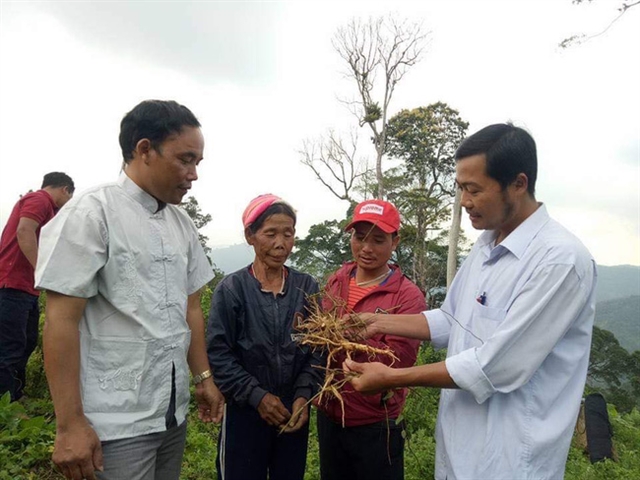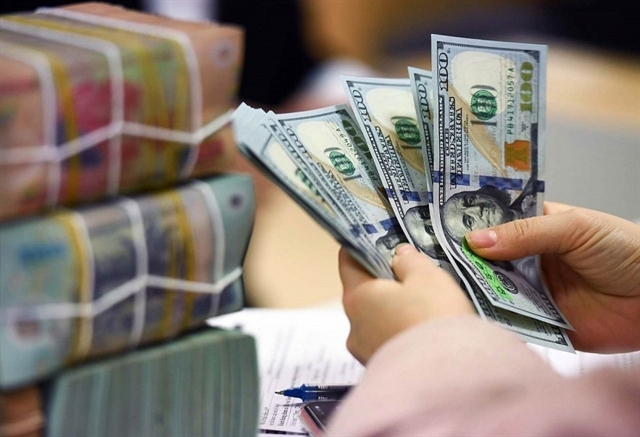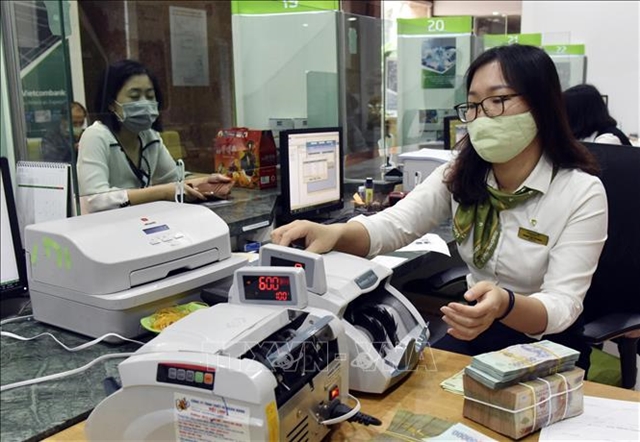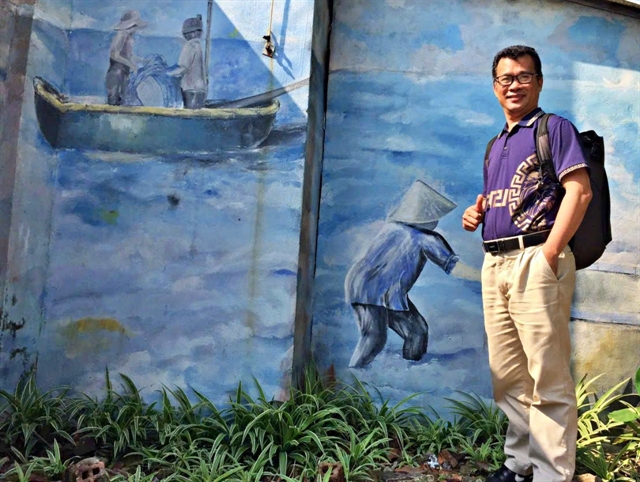 Society
Society

Growing medicinal plants has helped tackle hunger and poverty for ethnic minority people in the central province of Quảng Nam’s Tây Giang District, according to Nông Thôn Ngày Nay (Countryside Today) newspaper.

|
| Agricultural expert instructs ethnic people of Tây Giang District of Quảng Nam to grow medicinal plants. — Photo danviet.vn |
QUẢNG NAM — Growing medicinal plants has helped tackle hunger and poverty for ethnic minority people in the central province of Quảng Nam’s Tây Giang District, according to Nông Thôn Ngày Nay (Countryside Today) newspaper.
According to Trần Văn Ta, head of the district’s agriculture and rural development department, 90 per cent of the mountainous district’s population are ethnic minorities who live on agricultural production with unstable incomes.
However, in recent years, thanks to the expansion of medicinal plant growing, hundreds of poor ethnic minority households have escaped from poverty, Ta told the paper.
The main medicinal plants grown in the district are đảng sâm (poor man's gingseng) and ba kích (Indian mulberry), he said.
“Growing the medicinal plants was a sound economic development model which was suitable with the district’s climate and soil characteristics”, Ta said.
“Growing medicinal plants has not only helped ethnic minority people get out of poverty but also brought them stable incomes. It was truly a breakthrough of the district”, he said.
Many households now earn VNĐ120 to 150 million (US$5,000 – 6,400) per year.
Alăng Lơ, one of the ethnic minority people who has succeeded in the business in Achoong Hamlet told the paper: “Previously, my family planted keo (acacia) trees which did not bring high income."
“With the assistance of the district’s authority, I shifted into growing đảng sâm plants”, he said.
The plants were easy to nurture and could be harvested after two years, he said.
The 5ha of medicinal plants brought his family annual income of VNĐ120-150 million (US$5,000-6,400) which helped them escape hunger and poverty, and covered his children’s education fees.
Another farmer who earned money from ba kích is Cơ Lâu Thái Ngọc in Pơ r’ning Hamlet.
Along with growing acacia trees and raising livestock, his family cultivates 3ha of the medicinal plants, bringing VNĐ150-200 million (US$6,400-8,600) per year.
Lê Hoàng Linh, vice chairman of the district said the district has 941ha of the two medicinal plants grown by more than 1,000 households in Ch’ơm, Gari and Lăng communes.
In recent years year, Quảng Nam Province has carried out several policies on developing medicinal plants such as the provincial People’s Committee’s resolution on planning and developing medicinal plants in Quảng Nam in 2018-2025.
“The plan of preserving and developing has helped Tây Giang District develop its economy”, said Linh.
“The number of poor households dropped to 43 per cent this year from 84 per cent in 2003”, he added.
Tây Giang plans to expand medicinal plant growing and to encourage co-operatives and pharmaceutical companies to join with local people to form production chains to raise the economic value of the plants, he added.
At present, the district has two products of ba kích and đảng sâm medicinal wines which have been recognised with the province’s One Commune One Product (OCOP) title. — VNS









